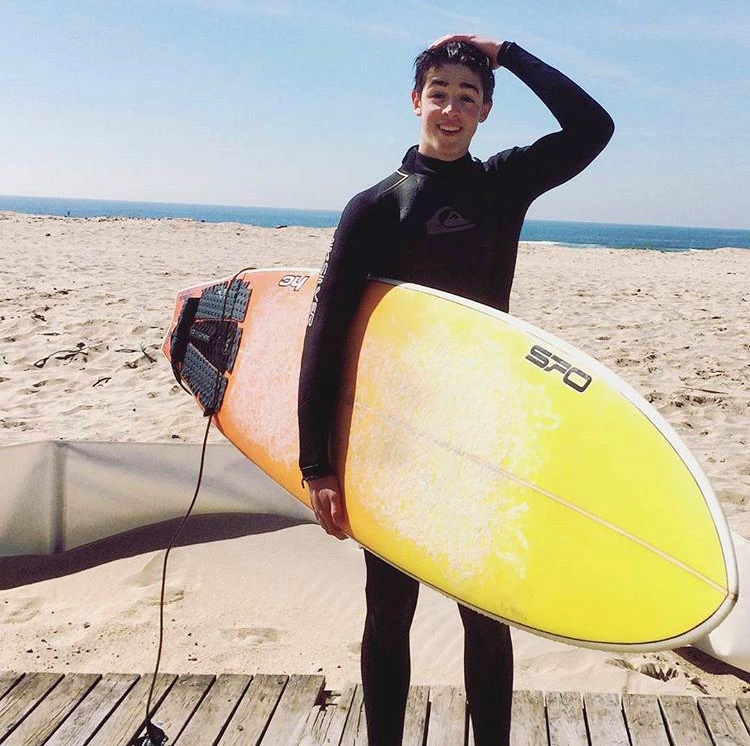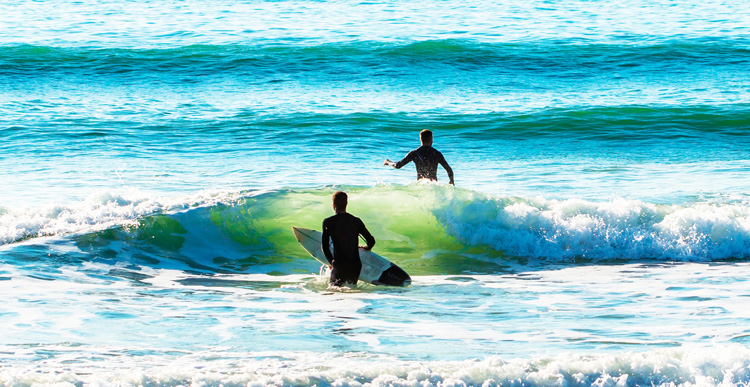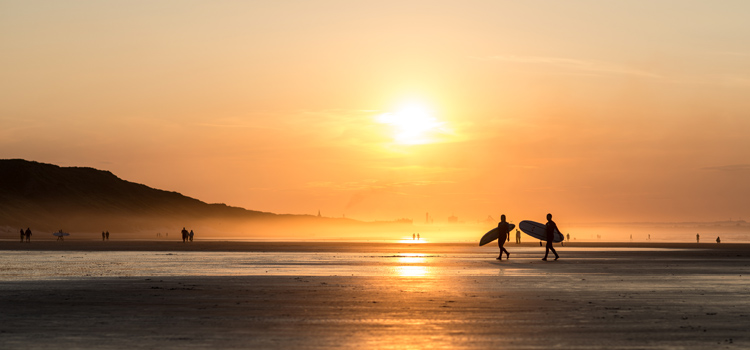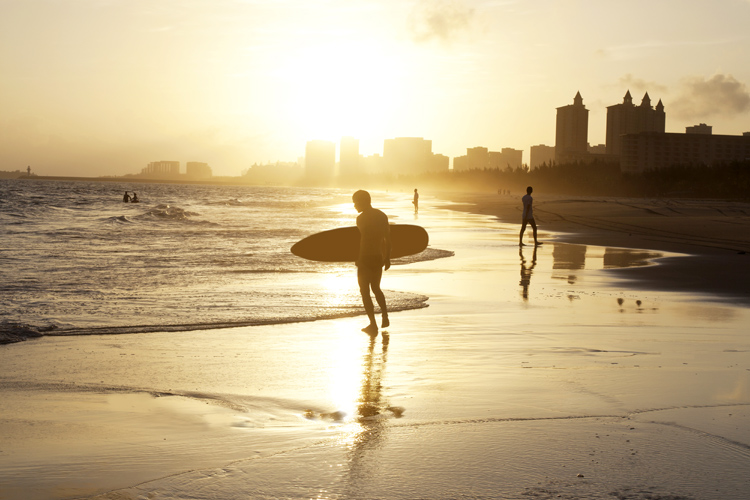This is the real-life story of Miguel, a 17-year-old who made surfing look easy by embracing it with a carefree attitude.
Those who have surfed for a couple of decades might have already shared the secrets of surfing with friends and family. In some cases, the seed was planted, and a new surfer joined our world.
Learning to surf isn't necessarily the easiest thing in the world. There's a sensitive winning formula involved that combines practice, patience, and persistence.
In the past, I had taught a friend how to paddle for waves and pop up on the surfboard.
At the time, he was in his early 30s, and he learned relatively fast. Maybe in a couple of weeks. But it was nothing compared to what I was about to witness.
For me, the trick has always been to catch as many waves as possible. Start in the small, low tide, ankle-high rollers, and then progress slowly into unbroken hip-high waves.
In other words, it's all about practice, practice, and more practice. It is absolutely okay to fall off in the first 20 attempts. It's part of the learning curve.
But this is a different story.
Who Needs Theory Anyway?
Pedro, one of my best friends, called me on a Saturday summer morning. He said: "Hey, do you think you could give my cousin a surfing lesson? He's 16, and he wants to learn to surf."
I accepted the challenge, thinking that it was just another teenage dreamer who had seen a cool surfing video online and wanted to impress the girls. No worries, I thought, let's do it.
We met each other near the beach. Miguel Magalhães was a tall and skinny, good-looking youngster, and he seemed fit to give it a go.
The first classic mistake was that he put the wetsuit on with the zipper facing forward.
I told my inner self: "Kook!"
And immediately started the 10-minute theory lesson - how to grab a board, how to lie on the board, how to paddle, how to duck dive, and how to pop up and maintain a good surfing stance.

As we walked down the beach toward the water, Miguel seemed relatively uncomfortable with the beginner's board and nearly stepped on the leash a couple of times.
"This is going to be tough," I thought to myself. But here we were, in the place where the magic happens: mid-to-low tide, knee-high waves, and sunny skies.
The first good sign was that he adapted well to the early instability of the prone position. Now, let's try to bodyboard our first wave all the way to the beach. Hmm, good.
"Are you feeling comfortable, mate?" I asked him. Miguel gave me a thumbs-up. Alright, so let's try to pop up and ride the first wave.
The First Wave
As I pushed him forward into the wave, I noticed he really wanted to do well. How did he communicate it?
I don't know how to describe it precisely, but there was something in his body expression that told me he would impress his cousin and me.
As the wave catches him from behind, I see a 16-year-old teenager popping up like an experienced surfer and riding the wave straight to terra firma until the fins are all buried deep in the sand.
What? Is this real? Who's that guy? It cannot be true. I must be following another guy. No, that's really him. It's Miguel Magalhães.
I just couldn't believe what my eyes were seeing. I nodded my head in awe and wondered if I had any special teaching power.
I had just told this fellow the very basics of surfing, and he was already gliding across the waves like someone who's been surfing for three to six months.
As I was starting to feel proud of my teaching skills, I was reminded by my ego that what had just occurred was nothing but beginner's luck. No way he was going to repeat the feat.

"Well done, mate. Let's keep things going. Catch as many waves as you can. I want to see it," I told him.
Second wave, ridden. Third wave, ridden. Fourth wave, ridden. Fifth wave, ridden with first signs of trimming.
Now, it was obvious to me that this story was not about "The man who taught a youngster to surf in 60 minutes." This was his story.
Of course, Miguel was surprised by his own natural talent. As he rode wave after wave, he looked back at me, shrugged his shoulders, and raised his arms in victory.
"Wow," I told his cousin Pedro. "This is the first time in my life I see someone getting into surfing so fast."
The surf session lasted roughly an hour. Our surfer friend was a bit tired. I told him I honestly had never seen a guy learning to catch waves so fast.
What Happened? You've Just Become a Surfer
He didn't say anything. He just smiled, showing only a slight sign of pride and vanity. The truth was that he deserved to feel whatever he wanted because I just didn't know what to think anymore.
As he took his wetsuit off in the worst possible way, I started praising him and telling him that the girls would be impressed. Miguel smiled, and then we said goodbye.

I never saw him again, but I really wish he continued to surf and improve his natural talent to ride waves.
Today, Magalhães could be competing. Or having the time of his life free surfing the world. He is living proof that the sport of riding waves is for everyone.
Sometimes, all we need is to follow our instincts and let life surprise us without elaborate plans, unnecessary theories, and practical instructions.
After 25 years of waves, unforgettable sessions, and countless ear-to-ear smiles, it still amazes me how anyone can just grab a board and start having fun in less than an hour.
Surfing really is an incredible sport. I love this game.
Words by Luís MP | Founder of SurferToday.com
